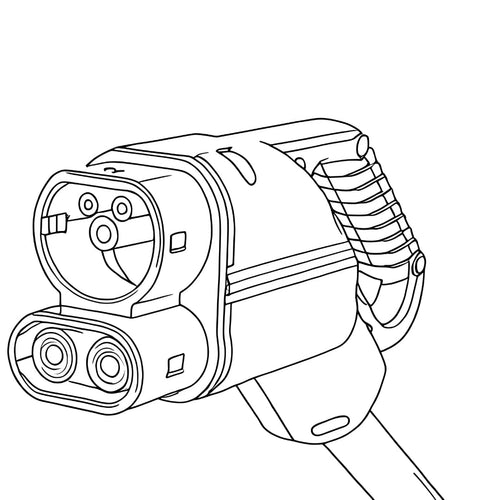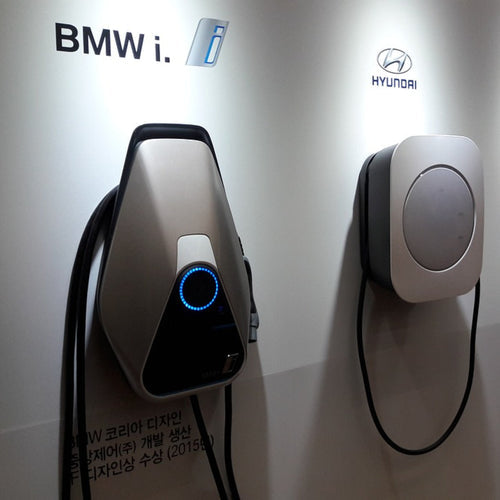There’s often confusion about whether a Level 2 charger is the same as a 240-volt outlet. In this article, we’ll break down the differences and help you decide which charging solution is best for you.
What is a 240-volt Outlet?
A 240-volt outlet is a type of electrical outlet that provides high-voltage power compared to the standard 120-volt outlet found in most homes. These outlets are commonly used for heavy-duty appliances such as electric dryers, ovens, and other large machinery. In the U.S., 240-volt outlets typically consist of two hot wires and a ground wire.

What is a Level 2 Charger?
A Level 2 charger is a specific type of EV charger designed to charge electric vehicles. Level 2 chargers operate at 240 volts (or sometimes 208 volts) and are commonly installed at home or in public charging stations.
Is a Level 2 Charger the Same as a 240-Volt Outlet?
The short answer is not. Although both a 240-volt outlet and a Level 2 charger deliver the same voltage (240 volts). But they have many differences:
Dedicated Charging Circuit
A dedicated Level 2 charger helps preserve EV battery life by delivering a gentler, more controlled charge compared to the potentially harsher charging from a standard 240-volt outlet. It is engineered to provide a consistent and optimized charge, significantly reducing charging times while ensuring better battery care.
Safety Features
Level 2 chargers include built-in safety features such as overcurrent protection, ground fault circuit interrupters (GFCIs), and charging control. These safety mechanisms ensure that your EV charges safely and efficiently. A standard 240-volt outlet does not come with these features, and using it with an unregulated charging cable can lead to potential issues such as overheating, power surges, or even fires.
Smart Features
Some Level 2 chargers come with smart features, like allowing you to monitor charging times, energy consumption, and even control the charger remotely via a smartphone app.

Does All Level 2 Charger Use 240-Volt Outlets?
Yes, all Level 2 chargers operate on 240-volt outlets, but not every 240-volt outlet is suitable for an EV charger. For example, a 240-volt outlet intended for an electric dryer or oven might not be compatible with the type of connector used by EV chargers.
Level 2 chargers require a dedicated 240-volt circuit designed specifically for charging electric vehicles, typically involving outlets like NEMA 14-50 or others that are capable of handling the electrical load required for fast charging.
Types of 240V Outlets
Several types of 240-volt outlets might be used for EV charging, but the most common one for home installations is the NEMA 14-50. Here’s an overview of different 240V outlets:
1. NEMA 6-30
NEMA 6-30 outlets are commonly used for medium-sized appliances, providing 240 volts and 30 amps.
Pros:
- Ideal for smaller charging setups and low-power applications.
- Commonly available and easy to install in certain scenarios.
Cons:
- Not powerful enough for most EVs. It provides limited current.
- Not the best option for fast EV charging.
2. NEMA 14-50
NEMA 14-50 outlets are the most common 240-volt outlet for EV charging. They Provide 240 volts and up to 50 amps of current, making them capable of charging most electric vehicles quickly.
Pros:
- Ideal for EV charging, providing up to 50 amps of current for rapid charging.
- Widely used for both residential and commercial charging stations.
- Supports fast, efficient charging for all electric vehicles.
Cons:
- Requires a dedicated installation by a licensed electrician.
- More expensive than a standard outlet to install.
3. NEMA 10-30
NEMA 10-30 outlets are an older type, providing 240 volts. They are primarily used for electric dryers. However, they are no longer recommended for new installations due to safety concerns.
Pros:
- Commonly found in older homes.
- Suitable for older electric vehicles that use slower charging options.
Cons:
- Outdated and no longer up to code for new installations.
- Lacks necessary safety features for modern EV charging.
Which One Should I Choose for Level 2 Charging?
For most EV owners, the best choice for installing a Level 2 charger is the NEMA 14-50 outlet. It provides the necessary power to charge your electric vehicle quickly and efficiently. If you’re building a new home or upgrading your electrical system, this is the outlet type you should choose.
In conclusion, while both 240-volt outlets and Level 2 chargers operate on the same voltage, they differ significantly in terms of performance and functionality. A Level 2 charger offers a more comprehensive solution, designed for faster, safer, and more efficient EV charging. It requires a dedicated outlet with the proper safety features to ensure optimal performance. Investing in a Level 2 charger is a smart choice—it enhances the convenience of your EV charging experience and helps preserve the longevity of your vehicle’s battery.










Leave a comment
This site is protected by hCaptcha and the hCaptcha Privacy Policy and Terms of Service apply.